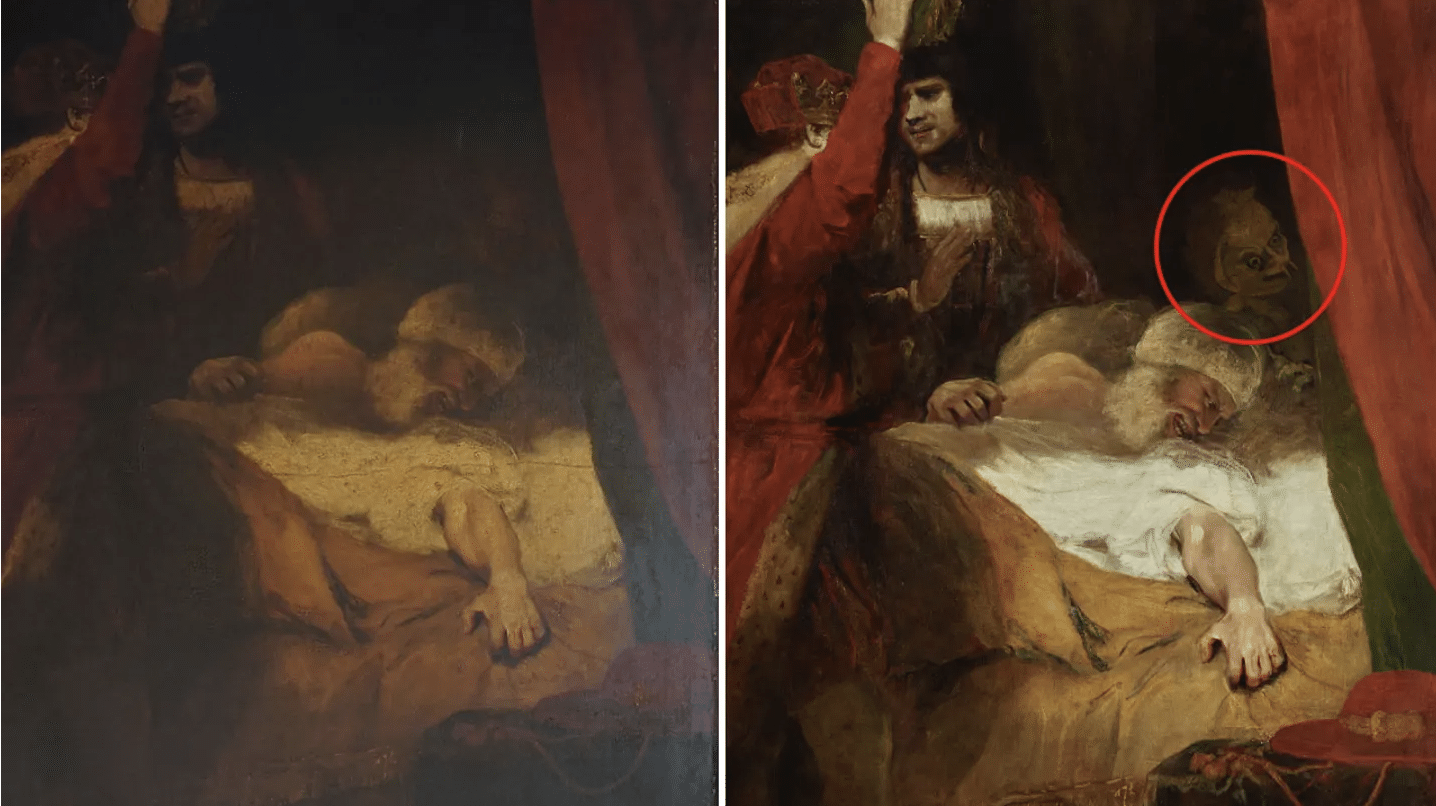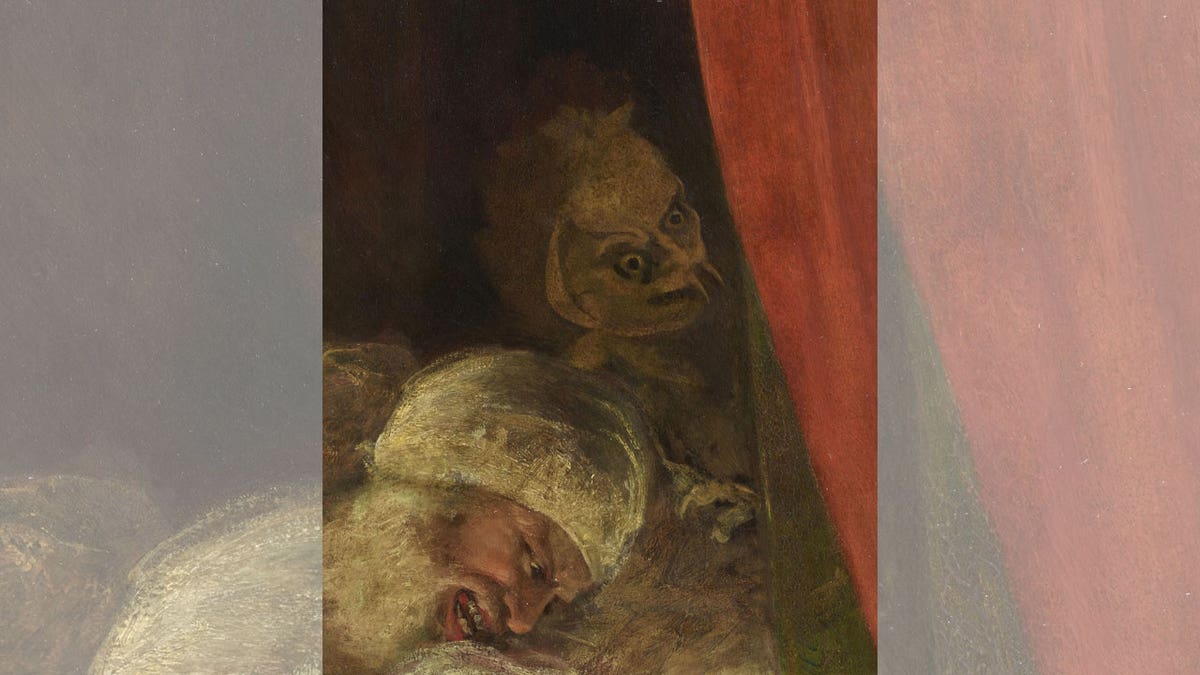A “devil-like figure” featured in a painting by a renowned artist that’s more than 230 years old has been rediscovered after a recent restoration.
The discovery came as a result of conservation work done by the National Trust on a painting of a Shakespearean scene by 18th Century artist Joshua Reynolds, who died in 1792.
Referred to by the Trust as a “fiend,” an evil spirit or demon, the painted figure proved to be controversial at the time. The figure, covered by layers of paint and varnish, was included in Reynolds’ painting based on a Shakespearean death scene, which was titled “The Death of Cardinal Beaufort.” Specifically, the painting shows a scene from Shakespeare’s “Henry VI, Part 2” with the king witnessing the death of Cardinal Beaufort.
According to Fox News, The figure, which included fangs and a sinister expression, was painted at the head of the bed, just above the dying Beaufort’s head. “It didn’t fit in with some of the artistic rules of the times to have a poetic figure of speech represented so literally in this monstrous figure,” said John Chu, the Trust’s senior national curator for pictures and sculpture.
“While it was considered acceptable in literature to introduce the idea of a demon as something in the mind of a person, to include it visually in a painting gave it too physical a form. There were even people who argued that it should have been painted out, although records of conversations with the artist show he resisted such attempts to alter the work.”
The painting by Reynolds, first revealed at the Shakespeare Gallery in 1789, is one of four that the National Trust has conserved to mark the 300th anniversary of the artist’s birth.
The artwork by Reynolds was created at the end of his career as a commercial commission for the Shakespeare Gallery in London’s Pall Mall, which paid 500 guineas for the painting, according to the Trust.











